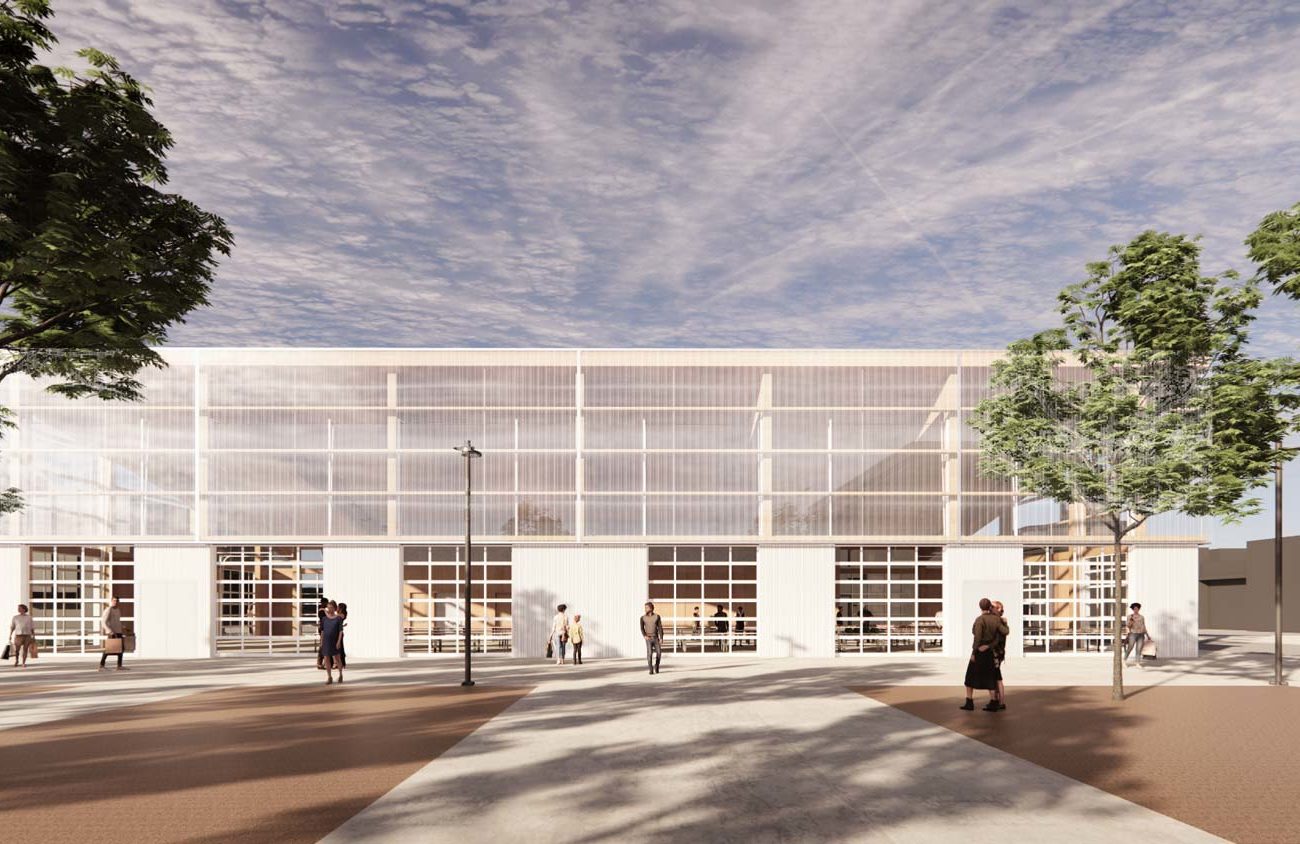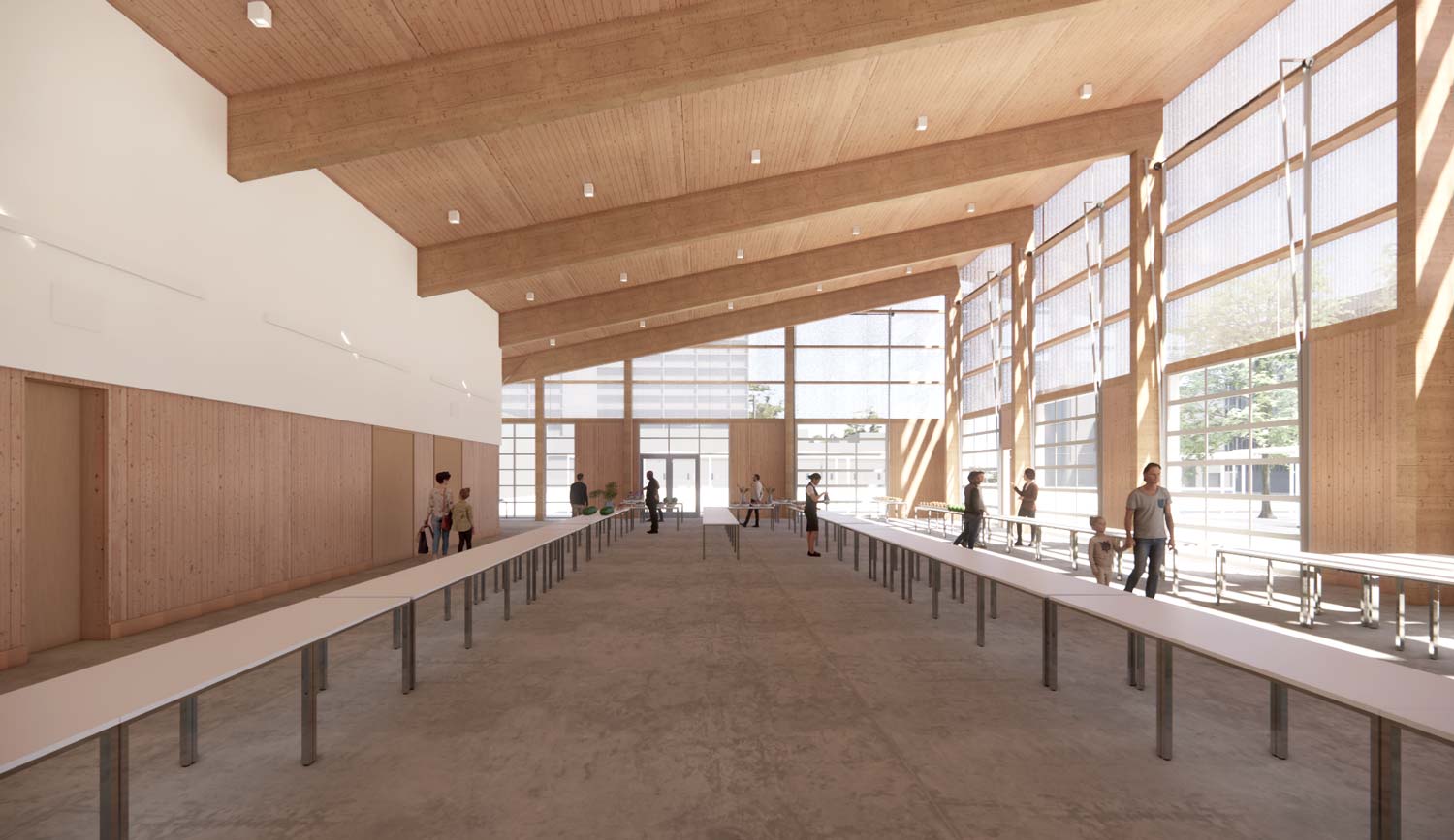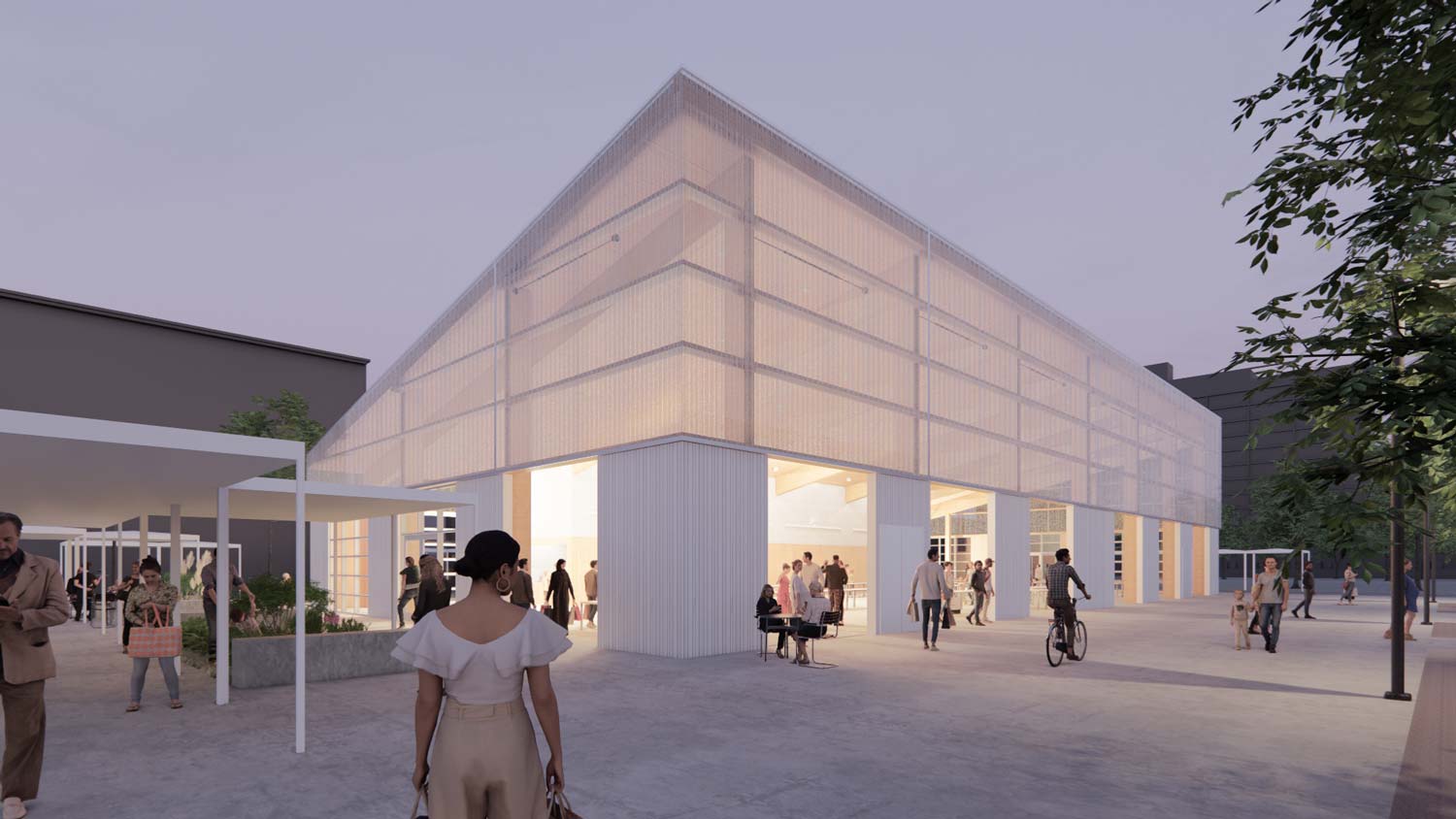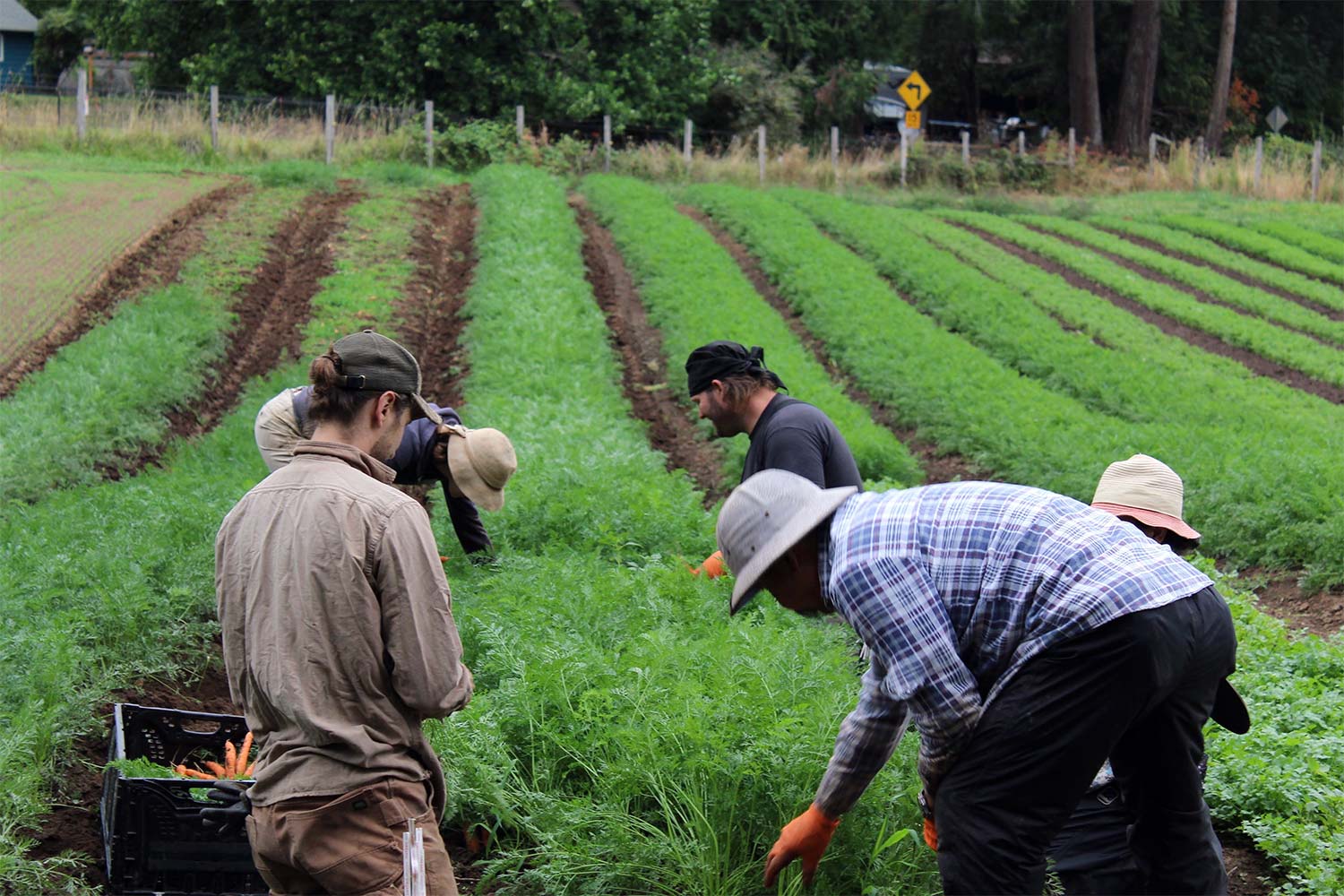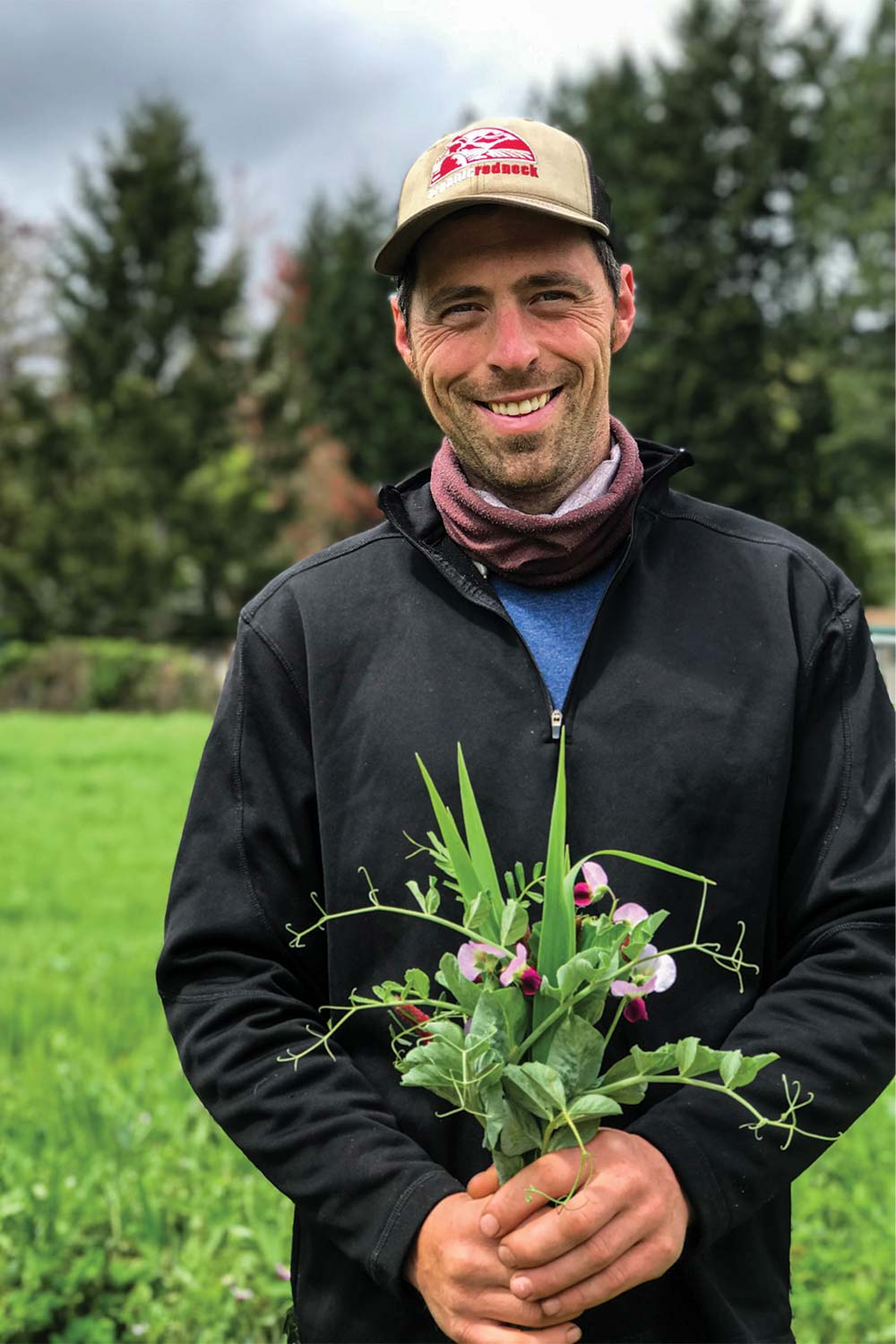It’s raining in downtown Eugene on a Saturday in early March. You need spring mix, carrots, celery and leeks to make a side salad for dinner. And you want to look your farmer in the eye as you buy the vegetables; you want to pay the hand that picked your food. You won’t have it any other way.
The misty drizzle, while tolerable, chills your bones after an hour of picking out which delectable veggies will make the plate. The steady rain attrites your spirit.
You’re a brave soul, enduring the elements in the name of local produce.
But come June, you’ll head to a new pavilion on 8th and Oak — the former home of the “butterfly” parking lot. You’ll buy local produce from vendors settled under a bright Douglas fir timber cover.
Sunlight will rush in from the windows above and spike your serotonin. You’ll be warm and dry, and your body fueled by the buzz of friendly commerce. Vendors will line the inside of the building in rows, more than you’ve seen at any Eugene market before.
Sliding garage doors provide a gateway, where you step outside into a concrete plaza decorated by rows of young trees, where more vendors wait for your business. It’s the place to be: the hub, a meeting place for the people, and the bridge between urban Eugene and rural communities around it that make the area an agricultural powerhouse. Such is the city’s vision.
Enlarge
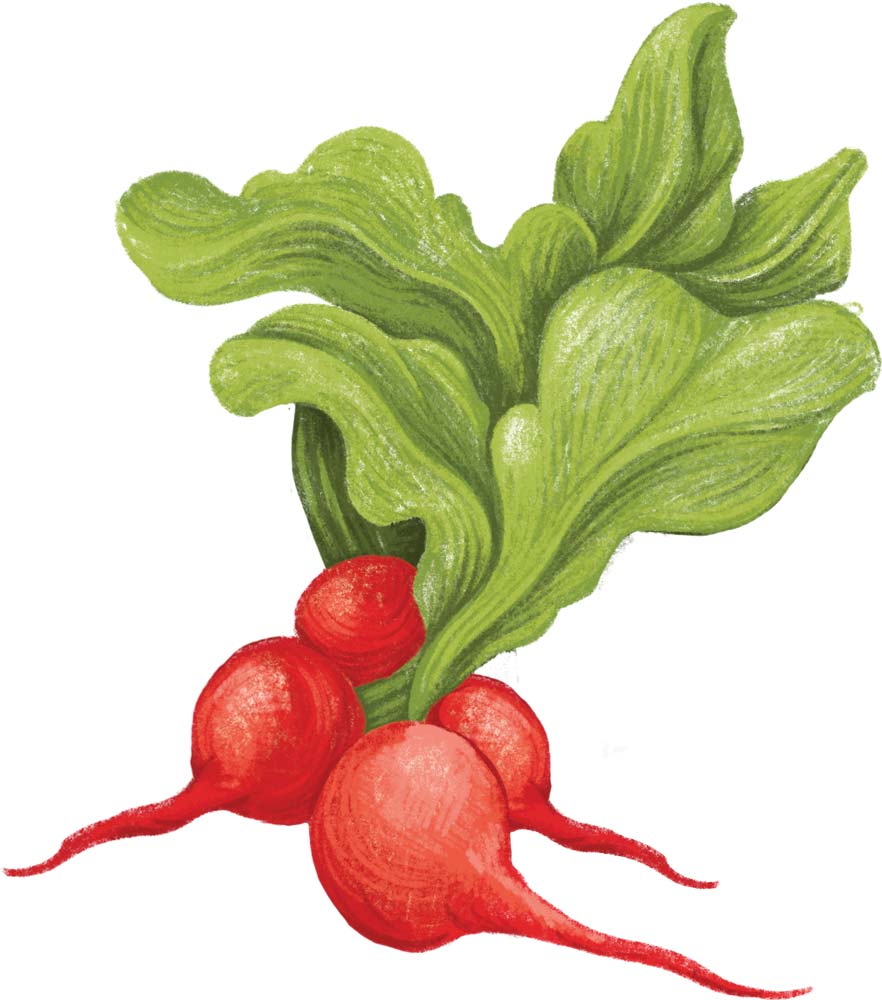
“The market is a long-standing and much valued institution in our city,” Mayor Lucy Vinis says. “We live in an agricultural bread basket, a community that produces fresh produce and processed produce. It’s an important part of our identity.”
Scheduled for completion in June — with a tentative move-in date of June 4 — the new pavilion and plaza on 8th and Park will be the new permanent home for the Lane County Farmers Market.
But the city also has plans for other projects in the area, including a City Hall just north of the pavilion, renovations to the Park Blocks — like eliminating curbs to improve accessibility — and a free speech plaza to the east. And the future of those projects, as of now, is unclear. As the city grapples with budgets and prioritizes projects, the pavilion is the star of the show.
The Eugene Saturday Market, a separate crafts market, will continue operations on the south Park Blocks.
The Farmers Market has a rental agreement with the city of Eugene to use the pavilion for the market, but money from the agreement won’t cover operating costs for the pavilion, like custodial and groundskeeper operations. City communications manager Lindsay Selser says the city’s General Fund will cover these costs.
And the market will operate on Tuesdays and Saturdays, leaving the rest of the week open for events like concerts that the city hopes will create a “bustling hub of community activity,” according to Selser. The pavilion will be ready in time for the 2022 World Athletics Championships track meet in July. City officials say the market will boost the local food economy and create a necessary gathering place. It’s a big step towards a goal for the market that’s been years in the making.
Urban renewal: riding into the sunset?
All of the funding for the Farmers Market Pavilion and Plaza came from the city’s Downtown Urban Renewal Fund.
The city established the downtown Urban Renewal Agency in 1958 as a separate budget entity, and then established the downtown district in 1968. When that district was set, it created a “frozen base” for property taxes. After 1968, any increase in assessed value and associated property taxes — also known as a tax increment — on buildings in the district went to the Urban Renewal District. That’s why the downtown urban renewal funding is also considered Tax Increment Financing, or TIF.
Money in the downtown Urban Renewal Fund can only be reinvested into projects within the downtown district. The district stretches as far as Lincoln Street to the west, Pearl and parts of High streets to the east (the border of the Riverfront Urban Renewal District), 5th Avenue to the north and 11th to the south.
Over time, the value of the properties in the district increases — meaning property taxes increase, too — which only provides more money to reinvest in downtown: a positive feedback loop. While public buildings like the pavilion won’t provide money for the city’s fund via property taxes, Anne Fifield, economic strategies manager for the city, says the idea is that new projects from the city will incentivize private developers to redevelop properties in a revitalized downtown. Since the district was created, the value has increased by 5 percent each year, a total of $453.4 million, according to the city’s website.
Fifeld says the Urban Renewal Fund is just a tool for reinvesting in downtown. She refers to Portland’s Pearl District as a successful example of TIF spending.
“You want to invest in your downtown so that it’s safe, it’s comfortable, and people want to be there,” Fifield says. “It’s the heart of commercial and cultural activity.”
In addition to the pavilion, TIF has funded projects like Eugene’s Downtown Public Library, a high-speed fiber project, and moving electrical wires underground.
The only hitch: urban renewal has a sunset. In theory, the City Council is supposed to retire a district and redistribute property taxes after it finishes investing in the area. For the Downtown District, just the opposite has happened.
In the last 25 years, the City Council — acting as the Urban Renewal Board when voting on TIF-related issues — has amended its urban renewal plan by increasing the spending limit three times: in 1998, when the council increased the limit to $33 million; in 2010, when the council increased the limit by an additional $13.6 million; and by another $19.4 million in 2016.
The fund has developed what Fifield describes as a “substantial” increment, given that the district was created 55 years ago. According to Eugene City Councilor Emily Semple, TIF funding downtown has become problematic. Semple’s Ward 1 encompasses the downtown area.
“It’s been extended so often,” Semple says. “I think we really do need to stop, it’s been going on a very long time, and I would like to see a different method of budgeting that money.”
Semple says that TIF money “robs” the general fund because it restricts money to only a few blocks when it could benefit the entire city. If the district were dissolved, most downtown property taxes would go either to the city or county’s general fund, or to education services.
A 2020 Urban Renewal Plan amendment estimates Eugene forgoes about $1.3 million in tax revenue annually because of urban renewal, while the combined school districts forgo about $1 million annually. But Eugene’s 4J school district, because of a local option levy, is actually better off financially with continued downtown urban renewal tax collection, the amendment says.
Fifield describes why the fund hasn’t sunset even though it was created 55 years ago.
“You’re basically fixing what’s wrong,” she says. “And by the time you fix that, there’s something else that needs to be fixed.”
When the city works on urban renewal projects, they also use the fund to pay administrative costs, like partial salaries for people who work on those projects.
According to the 2016 amendment, the City Council, acting as the Urban Renewal Agency Board, made four projects eligible for urban renewal funds: the Farmers Market Pavilion and Plaza, the Park Blocks, a high speed fiber project, and a Lane Community College building at 1059 Willamette Street.
The amendment specifically prohibited the use of urban renewal funds for the construction of City Hall and designated $4.5 million for the pavilion and $5.3 million for the Park Blocks improvements.
But in 2020, the council removed the $4.5 million spending cap for the pavilion project, citing needs for improved stability and durability. Eugene Community Development Co-Director Will Dowdy says a steep escalation in construction pricing, further exacerbated by the pandemic, also prompted the shift in finances. At that time, Dowdy says, the council decided to prioritize the Farmers Market Pavilion project over the Park Blocks improvements by effectively transferring the $5.3 million of Park Blocks money to be used on the pavilion.
“Rather than coming up with a broader funding package, they said that they might as well spend this money on the Farmers Market,” Dowdy says. “Let’s take more of this dedicated funding source and put it into this project now that feels like it’s the right time to do it.”
Vinis says the city wanted to prioritize projects with economic value, like the market. The city then spent $9.3 million to build the pavilion, $900,000 of which came from Lane County and the remainder from urban renewal money, Selser says.
Now, Dowdy says there are no urban renewal funds left for the Park Blocks project, including items in the final concept design like a performance stage on the southeast Park Block, an interactive fountain on the southwest Park Block and street improvements like eliminating curbs. And while there are other potential funding sources, Dowdy says, the project is on hold indefinitely.
According to Selser, the council will vote on whether or not to extend the urban renewal budget later this year, at which point they could also reconsider which projects are eligible for urban renewal funds.
Semple says she doesn’t know how others will feel, but that she won’t vote to extend the urban renewal budget.
“I do think that it’s time: it [TIF] has been going on and on and on,” Semple says. “That’s one way of looking at it. I’m the councilor for downtown, I want the money downtown. But I don’t think this is a fair way to take taxes.”
A local heritage
A light drizzle pats the top of a greenhouse on the Upriver Organics farm near Leaburg. It’s cold and cloudy out, but the temperature approaches comfortable inside the greenhouse, and a plastic roof brightens the ceiling. Inside, Jack Richardson, the farm’s owner, walks in rainboots with one foot directly in front of the other to avoid stepping on his crops as he patrols rows of spring mix, each hundreds of feet long.
Right outside the greenhouse, a thin layer of frost hugs the ground. Richardson scoops up a handful of dark, rich soil from a pile on the ground. It’s the consistency of a perfect chocolate cake. He rubs it between his thumb and forefinger and some trickles back to the ground, while some darkens and dirties his worn fingertips.
The Willamette and McKenzie valleys have rich, fertile soils formed from ice-age-era floods and lots of rain. Even with frost on the ground, these fertile soils yield crops all year long inside greenhouses. Richardson can only grow certain crops when it’s cold, like bok choy, spring mix, celery, carrots and leeks. But he says a year-round market will allow him to sell these crops fresh — and to a more reliable customer base — during the cold winter months, and in January, when the market is usually closed. The market is Richardson’s top outlet for selling produce.
“The greater value is to create a consistent place where people who want to buy locally, direct from farms know that they can go year round,” Richardson says.
He adds: “I think a lot of people don’t even know it’s happening in February or aren’t interested in going out when it’s that cold.”
And it’s not just winter crops that Richardson can sell when it’s cold. He freezes blueberries (the 10-acre farm was Oregon’s largest blueberry farm in 1952, and today blueberries are still the farm’s top-selling crop) in a large, walk-in freezer after harvesting them in the summer. That means he can sell them all year round, and buyers can now get local out-of-season crops in January.
At the farm, Richardson’s old Subaru Outback is parked in the lot. His relationship with the Lane County Farmers Market started back when he was just 17, when he would pile as many vegetables into the car as he could, drive into town and run the booth himself on the street, and then drive back to the farm at the end of the day.
Now 35, Richardson rents a 10 by 20 space at the market. But the tradition of the farmers market downtown has a much deeper history than the last 18 years.
The Eugene Producer’s market began in 1915, when 20 vendors set up shop on Park Street in the town square, the same location of the new pavilion.
Meghan Verberkmoes, communications manager for the Lane County Farmers Market, says that while the market’s temporary location on 5th and Oak has worked well, it’s important that they get back to the original location.
“The market has a really strong connection to that physical location, and it’s meaningful to have our market in the same place that the first one was,” Verberkmoes says.
According to Stan Bettis’ book Market Days: an informal history of the Eugene Producers’ Public Market, the establishment of that first market took some prodding from the Lane County Grange Society, a group of local farmers, at a City Council meeting. On Aug. 6, 1915, farmer C.J. Hurd addressed the council, saying that without a roof or some kind of canvas tent, the market wouldn’t have a chance.
And the council, with the goal of providing a place that would equally benefit both the producer and the consumer, agreed to build an “inexpensive, but substantial, shed” on Park Street. The city built 22 stalls, each 6 by 10 feet. Rental was 25 cents per day, and 25 cents for each additional vendor in a stall. Today, a 10 by 10 booth is $50 for the day.
While the original shed was eventually torn down, the new pavilion will serve a similar purpose to that original structure. According to Market Days, Hurd estimated that he doubled his sales in two days after the market’s opening. Verberkmoes says the same will happen when the new pavilion opens.
“It’s going to be an opportunity for a boost to vendors’ businesses,” Verberkmoes says.
And it’s an opportunity for the market to grow. While vending on the street limited the market’s size, Verberkmoes says the new market space will allow for about 75 vendors — 50 percent more than before the pavilion. The space will also allow existing vendors to expand their booths. Even so, the price for a booth will remain the same.
Fifield says an increase in vendors will create another positive feedback loop. More vendors means more buyers, and more buyers means a bigger customer base to add more vendors.
“This is the land of milk and honey, and the Lane County Farmers Market just exemplifies that,” Fifield says. “It shows off the agricultural bounty of this region, and it’s not going to be in a little cramped space anymore.”
Tomato, tomahto
The Farmers Market Pavilion, uncoincidentally, looks much like a greenhouse itself.
Dowdy says in early conversations about designs, the city considered modeling the pavilion after two types of agricultural buildings: barns and greenhouses. But their focus narrowed after conversations with vendors.
“If you’re a farmer, a barn is where you keep old equipment and your smelly animals,” Dowdy says. “They’re dark and dirty, they’re gross, and they’re storage. Greenhouses are light, it’s where you have growth, it’s where you put something precious when the weather outside isn’t conducive to it. All of the good positive imagery was about greenhouses.”
Translucent polycarbonate glass panels above the sliding garage doors deliver the greenhouse aesthetic. And like a greenhouse, the building insulates heat well when it’s cold and vents well when it’s hot. The only part that isn’t greenhouse-esque is a metal roof that slants upward slightly toward the east, which Dowdy says will provide shade in the summer months and open the pavilion to the plaza.
And even though it’s in the center of the city, the pavilion has a strong connection to neighboring forests. The pavilion’s structure comes from a product called cross-laminated timber, or CLT, which is made by gluing layers of wooden boards together in a crosswise pattern to form much larger panels. Project manager Riley Allen says CLT’s popularity as a building material in mass timber projects is growing in the Pacific Northwest. According to Dowdy, the product is “like the analogue to the produce inside.”
“We couldn’t build the pavilion out of tomatoes, but the next best thing was to build it out of this CLT stuff,” he says.
According to Ihab Elzeyadi, a professor at the University of Oregon who specializes in the relationship between architecture and wellness, the benefits to the pavilion’s design are plenty: relative sustainability — as opposed to steel or concrete — of timber as a renewable resource, increased structural stability, and it doesn’t require added materials or finishes, meaning CLT can be left exposed on the inside of the building.
“It’s more of a Northwest feel,” Elzeyadi says. “It’s coming from the forest next door, so it’s very local.”
Elzeyadi says the natural materials of the pavilion will likely increase the overall wellness of market goers. The design caters to the principle of biophilia — the affinity of humans to natural spaces.
“Things that closely resemble nature or get us close to nature — fractal patterns, dappling light — all these instances remind you of nature, and it’s been proven that occupants of a space benefit from that,” Elzeyadi says.
Dowdy says the transparency of the building allows for natural daylight as the primary lighting system during the day, adding to the sustainability of the building. There’s also an LED system for nighttime events.
In designing the building, Dowdy says the city made sure the vendors and citizens of Eugene were getting what they wanted.
On the other hand, architect Otto Poticha, a UO architecture professor of 59 years who designed the Lane County Public Service Building, says the city was too focused on building a large pavilion as an individual project and failed to consider what it might mean for the corollary projects, especially since construction on other projects has yet to begin.
On a map of the concept for the project, he points to each block on the corners of 8th and Oak.
“This is one room, this is another room, this is a room, and this is a room — does it ever become a whole house? Each was its own task, and each had its own design,” he says. “That ain’t a public square.”
Poticha and architectural historian Richard Sundt agree that because of the planted trees on the concrete plaza and the pavilion’s size, there won’t be a central space for people to congregate in the square. And as these young trees grow, Sundt says they’ll block the view from the Park Blocks to what could be a new City Hall north of the pavilion, creating a disconnect between the blocks.
In addition, Poticha says the pavilion, because of its size and color, will “compete” with a potential new City Hall.
“The centerpiece of this whole block would be the City Hall, and how the City Hall visually connects to all of this,” Poticha says. “I mean, that’s the reason to move City Hall here. But how it connects is very slight.”
Dowdy says the city intentionally considered the Farmer’s Market Pavilion, the City Hall and the Park Blocks together in the concept plan stage “to make sure that the design of each would be compatible with the rest.”
And as construction finishes up on the pavilion, it stands out — as a celebration of agricultural heritage, or as a miscalculation of city planning? The answer awaits the fate of City Hall.
Jiggety jig
For the farmers who advocated for a structure to host the market in the same exact place 100 years ago, the pavilion would be quite the sight.
Enlarge

Market-goers in Eugene have watched their temple rise from the ruins of a parking garage over the last 18 months. Now, the pavilion is clearly visible, only a few short weeks before the fence will be removed and the people of Eugene can begin congregating and buying.
Dowdy says it’s the interaction between market-goer and vendor that makes the Eugene market special.
“This is not a hokey market where people who don’t know what they’re doing are selling things to people who don’t know what they’re buying,” Dowdy says. “These are people who spend five days a week getting their hands dirty and the other two days selling the things they’re growing.”
The City Council chose the market as the first priority. In doing so, they put other projects in the queue. So, the people of Eugene get the pavilion — and it’s up to them to decide what that’s worth.
“It’s a way to honor that and recognize that Eugene is one of those cities that balances agriculture and urban,” Dowdy says. “That permeates everything we do.”
This is Part 1 of a series on Eugene’s downtown Park Blocks.
